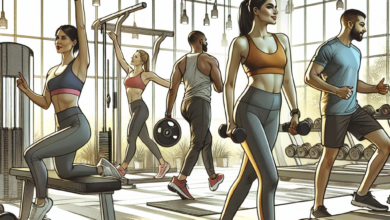How to Increase Bench Press: Scientific Study Results

The bench press is a popular strength exercise among competitive athletes and gym veterans. It’s one of the best upper body workouts that anyone can do, and if it’s performed regularly and correctly, it should touch on the shoulders, pectorals, triceps, and sometimes the legs. With such amazing benefits, you’ve got every reason to rise the ladder.
Even so, keep in mind that the bench press is a technical exercise, and you could get injured if you try to break a plateau the wrong way. You might have tried some tips with little success, but don’t give up just yet. We are here to discuss some scientifically proven methods to increase your bench press.
Work on Upper Chest Muscles
With an underdeveloped chest, your chances of achieving an impressive bench press are quite slim. Since it’s an upper-body exercise, your success depends on the size and strength of your chest muscles. To build all the muscles needed for a bench press, consider performing the workout at an inclined position, as it targets both upper-body muscles and the front part of your shoulders.
When you visit the gym, you’ll have two surface options to perform your press: the standard flat surface or an inclined bench station. The latter is the best, so go for it. If you’re using a do-it-yourself station at home, be sure to stack at least four plates on the ground to raise one end of the bench.
Inclined pressing has been proven to build and strengthen upper-body muscles for a quality bench press.
Psych Yourself Up
Sometimes it’s not your strength that gets you a quality press. It would be best if you had the motivation to keep going, and you’re the one to find it. Unlike other simple exercises, with weightlifting, you have to get ready both physically and mentally. A little distraction can ruin your presses, and that calls for concentration during the workout.
Singing some of your favorite workout songs as you get ready for a bench press goes a long way to prepare you for more exceptional achievements. Research findings show there’s a significant increase in force production for lifters who pump up before the workout.
Also, don’t ignore the power of visualization. Before you climb on the bench, imagine yourself performing the presses successfully. It gives you the confidence and courage to do more counts than you expect. Based on research, visualizing a successful bench press before performance increases one’s strength.

Increase the Pace of Your Lifts
Someone might have told you that performing slow lifts improves performance, but that’s not true, according to science. Based on scientific findings, lowering the bar in a second and shooting it up explosively increases your strength significantly. On the other hand, a slow descent followed by a break and then an explosive ascent results in minimal power gains.
Nevertheless, be a little more careful with explosive weightlifting. Don’t try a fiery ascent towards the end of a rep, as you can get hurt. Also, in a bid to lower the bar quickly, don’t just drop it on your chest. Instead, let it feel like you’re pulling the weight towards your body. Otherwise, you may not get much from your bench press.
Prioritize Bench Press in Your Workout Routine
If your workout session ends with a bench press, it will be hard for you to break a weightlifting plateau. While it’s easier to start with those simple exercises, you gain little power when you perform the bench press last.
In case you didn’t know, the order in which you carry out your exercises determines your power gains and overall workout performance, according to a scientific study. To get most out of your workouts, consider starting with more demanding ones, like the squat and bench press, and slowly get down to simple ones, such as dips and lunges.
If you’re focusing on building your chest and shoulder muscles, it’s advisable to stick to the bench press at the beginning of every workout. In that way, you’ll be able to expand your press counts over time.
Optimal Training is Key
It’s exciting to see your bench press counts soar higher after a few days of consistent workout, but don’t overtrain. Your body needs time to adjust to heavy weightlifting. If you’re a newbie in the gym, don’t try to compete with the veterans. They’ve been training for quite some time, so they have gathered enough strength to endure intense workouts.
Begin with lighter weights and fewer reps per workout to train your muscles. It’s a gradual process, so keep increasing the intensity in every session. Performing 40 to 60 reps every week is suitable for a start. If you start with heavier weights with more reps, you won’t get a chance to train your muscles, and that hinders your progress.
Keep in mind that the volume of the exercise matters more than frequency. When it comes to muscle and strength building, proper workout intensity goes a long way to improve your gains.
If you’re rolling out your first workout routine, be sure to set achievable goals. There’s nothing wrong if you can only manage a few reps for a start. Remember, your muscles need some training to endure heavy weightlifting. So take things slowly until your body is ready for intense workouts.



